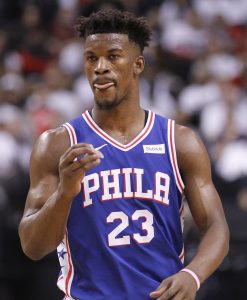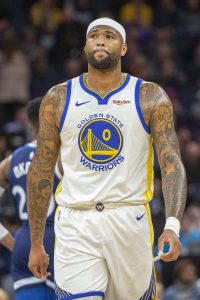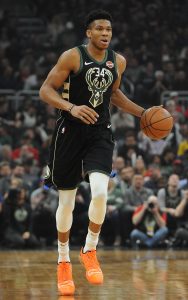The NBA’s most inscrutable star has said so little about his upcoming free agency that it’s virtually impossible to even read between the lines of the comments he has made. Instead, we’ve had to rely all season on anonymous sources and second-hand reports, most of which have said the same thing: The Clippers look like the frontrunners to land Leonard.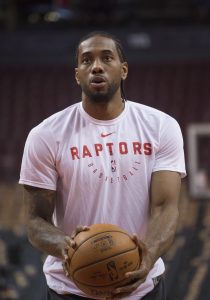
Many of the reporters who have addressed Leonard’s free agency throughout the year have acknowledged themselves that trying to read the tea leaves on Kawhi is futile, but as I pointed out last week when I discussed the rumors linking Kevin Durant to the Knicks, these reports aren’t being pulled out of thin air. If enough people in the know are saying the same thing, there’s generally something to it.
Leonard has long been linked to his hometown of Los Angeles, and there have been whispers that playing second fiddle to LeBron on the Lakers wouldn’t appeal to him, so the Clippers rumblings make sense. He’d be an ideal fit for a team on the rise that already has a pair of promising young centers (Montrezl Harrell and Ivica Zubac) and an impressive trio of guards (Gilgeous-Alexander, Shamet, and Lou Williams) under control, with the flexibility to add more weapons.
Still, the Raptors won’t let Leonard get away easily. They can offer him more years and more money than any rival suitor, but will also be willing to accommodate a shorter-term deal if that’s Kawhi’s preference. Throw in the fact that Leonard has reached an NBA Finals in his first season in Toronto and there’s a case to be made that the Raptors are an even better fit than the Clips. With Leonard unlikely to tip his hand until after free agency gets underway, we’ll have to wait a few more weeks to see which direction he’s leaning.
2. If the Clippers can’t land Leonard, which free agents will they turn their attention to?
The Clippers can carve out upwards of $56MM in cap room fairly easily, even without making any cost-cutting moves. They have the means to go after whomever they want on the open market, and they’ll have an attractive situation to sell. Even if they can’t reel in Leonard, the Clippers should have the ear of other top free agents.
The most obvious target – one who probably deserves co-billing at the top of the team’s wish list alongside Leonard – is Durant. There has been speculation for months that KD’s days in Golden State are numbered, which opens the door for a team like the Clips to make a run at the two-time Finals MVP. A reunion with the Warriors is still in play, and teams like the Nets and Knicks will aggressively pursue Durant, but the Clips shouldn’t be ruled out.
After Leonard and Durant, the Clippers’ list of top targets gets murkier. I’m skeptical that the club will have serious interest in point guards like Kyrie Irving and Kemba Walker, given SGA’s potential. L.A.’s in-season trade of Tobias Harris suggested the team wasn’t committed to him long-term. Klay Thompson would be a great fit, but he’s much less likely than Durant to leave the Dubs.
Among the top tier or two of 2019’s unrestricted free agents, that leaves Jimmy Butler and Khris Middleton. I think both players would be strong additions for the Clippers, but in order to realistically have a shot at either them, the franchise would likely have to a put a four-year, maximum-salary offer on the table. After meticulously clearing their cap over the last couple years, the Clips may not want to surrender that flexibility by going all-in on a borderline All-Star.
3. Will the Clippers trade any of their top assets?
If the Clippers can’t land a star on the free agent market, their best bet would be on the trade market, where Anthony Davis is expected to be on the block this summer. With several teams gunning for the All-Star big man though, the Clips would have to make a substantial offer to have a realistic shot at him.
As Chris Crouse outlined in his breakdown of the most valuable assets among Davis’ top suitors, Los Angeles has some strong pieces. Shamet, Williams, and Harrell are all on extremely team-friendly deals and are capable of immediately slotting into any team’s rotation. The Clippers don’t have a first-round pick in this year’s draft, but hold extra selections in future years, including the Sixers’ first-rounder in 2020 (lottery protected) and the Heat’s 2021 first-rounder (unprotected).
The Clippers could put together a tantalizing package using some combination of those players and picks, especially if they’re willing to use their cap room to take on Solomon Hill‘s contract along with Davis. But it’s hard to picture the Pelicans being satisfied with a Clippers package that doesn’t include Gilgeous-Alexander.
While SGA’s rookie stats (10.8 PPG, 3.3 APG, 2.8 RPG) don’t jump off the page, his shooting efficiency (.476/.367/.800) and his defensive abilities suggest he’s capable of stardom. He’s probably the closest thing the Clippers have to an untouchable piece, and unless they can count on acquiring another star or two to join Davis in L.A., the Clips will be extremely reluctant to put him on the table in any trade talks.
The Clippers’ other players – including Jerome Robinson and Danilo Gallinari – could probably be had in the right deal, but I don’t expect the team to part with any of its more valuable contracts unless a clear upgrade is available.
4. Will Danilo Gallinari return to the Clippers?
Gallinari is one of the most interesting pieces on the Clippers’ roster. He’s the only player currently slated to earn more than $8MM for the team next season, and while his expiring contract is sizable ($22.6MM), it’s not a negative asset by any means.
Gallinari is coming off a bounce-back year in which he stayed relatively healthy and received legitimate All-Star consideration, averaging career highs in PPG (19.8), RPG (6.1), and FG% (.463), among other categories. For a team that whiffs on its top targets in free agency, acquiring Gallinari with its leftover cap room isn’t a bad fallback option — especially if the Clips are just looking to get off his salary and don’t require a major return.
Of course, there are only a handful of specific scenarios in which the Clippers would want to shed Gallinari’s expiring deal. If they knock it out of the park in free agency and convince two maximum-salary players to join them, Gallinari’s contract would need to be moved to create more cap space.
Gallinari could also be the primary salary-matching piece in a trade for a star. Davis’ $27MM salary, for instance, isn’t far off from Gallinari’s cap hit. Starting a package with the Italian forward would make it much simpler to build an offer, since the Clippers wouldn’t have to worry about throwing four or five lesser-paid players into a deal to match AD’s cap figure.
If those opportunities don’t arise in free agency or on the trade market, the Clippers probably won’t mind bringing Gallinari back. But his expiring deal and his career year in 2018/19 certainly make him one of the offseason’s more intriguing candidates.
5. Which of their own free agents will the Clippers prioritize?
While they may enter free agency focused on big fish like Leonard and Durant, the Clippers have a few pretty good players of their own headed for the open market. I don’t expect the Clips to pursue new deals with Wilson Chandler, Garrett Temple, or JaMychal Green too aggressively, but if they can bring back Zubac, Patrick Beverley, and Rodney McGruder at reasonable rates, they’ll likely try to do so.
Zubac, whom the Clippers stole from the Lakers in a deadline deal, and McGruder, who was claimed off waivers at the end of the season when the Heat got desperate to duck the tax, are restricted free agents. Their combined cap holds only total about $5MM, so the Clips can issue qualifying offers to both players and still have more than enough cap room for a maximum-salary free agent.
If Zubac or McGruder gets an offer sheet that the Clippers are uncomfortable with matching, it’d be easy enough to part ways with them, but their RFA status should give the club some leverage in contract negotiations.
As for Beverley, he’ll be unrestricted and will likely draw interest from teams around the league in need of a veteran point guard, including the Bulls, Suns, and a handful of others. After missing most of the 2017/18 season with a significant knee injury, Beverley proved in 2018/19 that he was fully healthy, averaging 27.4 MPG in 78 games for L.A., with a .397 3PT% and exceptional perimeter defense.
Re-signing Beverley to share point guard duties with Gilgeous-Alexander would be great if the Clippers can pull it off, but with SGA likely prepared to take on a larger role in his sophomore season, the team shouldn’t get into a bidding war if the cost for Beverley gets too high.
Check out the Los Angeles Clippers’ offseason salary cap outlook right here.
Salary information from Basketball Insiders was used in the creation of this post. Photos courtesy of USA Today Sports Images.
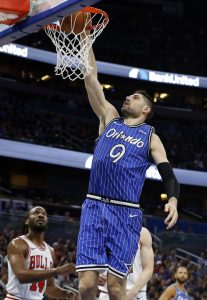
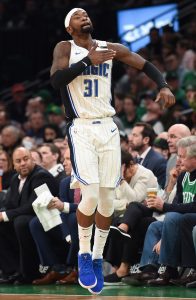 Vucevic is probably the most important free agent on the Magic’s books this offseason, but Ross isn’t far behind. On a roster that didn’t feature many other efficient volume shooters, he played a crucial role, making 38.3% of his three-point attempts on a career-high 7.0 attempts per game. He’s not a one-dimensional player either, as he contributed to one of the NBA’s best defenses with his length and versatility.
Vucevic is probably the most important free agent on the Magic’s books this offseason, but Ross isn’t far behind. On a roster that didn’t feature many other efficient volume shooters, he played a crucial role, making 38.3% of his three-point attempts on a career-high 7.0 attempts per game. He’s not a one-dimensional player either, as he contributed to one of the NBA’s best defenses with his length and versatility.

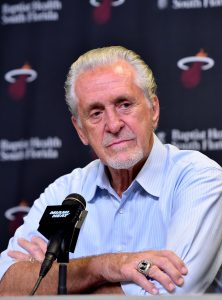
 If the Heat remain committed to creating cap room for 2020, it might make more sense to hang onto Dragic and Whiteside unless they can be dealt for other expiring contracts. Instead of shopping those expiring deals, the Heat could focus on moving multiyear contracts like Johnson’s and Waiters’ in an effort to create more flexibility for the ’20 offseason.
If the Heat remain committed to creating cap room for 2020, it might make more sense to hang onto Dragic and Whiteside unless they can be dealt for other expiring contracts. Instead of shopping those expiring deals, the Heat could focus on moving multiyear contracts like Johnson’s and Waiters’ in an effort to create more flexibility for the ’20 offseason.